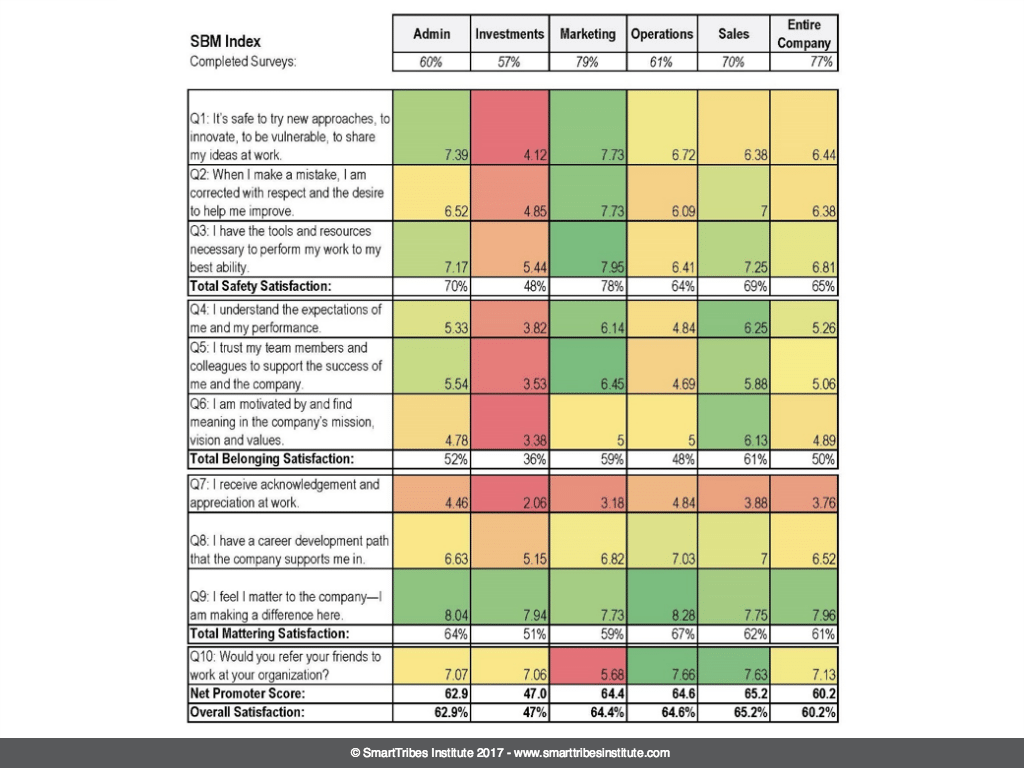
Featuring case studies and proven techniques, Power Your Tribe provides a set of powerful neuroscience-based tools to help managers identify emotions, release resistance, end isolation, focus on outcomes, and course-correct for continued success.

*As originally seen on Forbes.com
Are you in the midst of a mergers and acquisitions adventure? Growth can be threatening, but it doesn’t have to be.
My client had already acquired three competitors, tripled their headcount, and quintupled their revenue in only a 4-year period. Revenue had surged from $50 million to $250 million as they moved rapidly through 2 key inflection points. Though mergers and acquisitions (M&A) are an exciting and powerful path to rapid growth—they often bring tremendous stress, leading to Critter State behavior.

Assess: What We Found
The amount of change due to the acquisitions, had hurt employee retention due to four competing cultures. One culture was very conservative (ties every day in every role), one culture was very laid back (jeans, flip flops, t-shirts), and one culture was middle of the road, like the parent company was.
Since the cultures hadn’t been integrated into a singular cohesive one, silos had formed, slowing effective information flow and decision making. And trust was low as a result. Now that the basic integration was done, it was essential to ask “Who are we going to be together? What is our tribal identity?” It was time to create trust and tribe.
And when fears collide with a belief that the system is failing, or that one doesn’t and never will belong, trouble results. As distrust and fear increase, the negative impact on employee morale, engagement and performance accelerate. The end results are disengaged employees, frustrated management, and lower profits. And the problem comes from four key emotional experiences:
Act: What We Did
In this case, we had to release resistance, make new meaning and establish a new identity, and enroll and engage.
First, we did an SBM Index to gauge how everyone felt, and determine what they needed most. We found that people really wanted belonging (no surprise), and we did culture coaching for a year to create the cultural rituals to help people come together.

The new blend of leadership team then took a roadshow to all sites to make everyone feel everyone is in it together, and to make clear that no single site is better than others. The main communication: “You are safe here, we are all in this together, and everybody matters.”
We also had to acknowledge the grieving. After all, some well-loved employees had lost their jobs, and you can’t have two HR departments and two finance divisions. And some product lines and service offerings were cut as well, since they weren’t profitable or relevant to the new entity. So we designed parting rituals to minimize the grieving, and acknowledge and appreciate the parting people’s contributions.
Together we forged a new vision and set of company values (and of course dress code: business casual). And we made sure to set up cross-functional teams (that were of course diverse) for all new initiatives; cultural, sales, marketing, or operational. In a word, we created more collaboration, communication, transparency and mutual respect. Everyone owned that rebuilding trust is a shared responsibility. They were in it together.
Mission – Why are we here as an organization? Why do we exist? What are we going to make happen because we exist? The mission is a long-term proposition that is lasting— that doesn’t change.
Vision – A vision is a picture of what you want, as far out on the horizon as you can see, as an organization or as an individual. This can be three to five years, or even longer. What’s the clear future you see for the organization? What do you want your world to be like / to have achieved in the future?
Values – Values are what you honor and believe in, which will govern how you will behave as you are fulfilling your mission and creating your vision. Values determine standards of behavior, the code of conduct that you will not compromise.
Building sustainable trust was key. This means taking employee engagement and empowerment to a new level, and ensuring leadership is engaged and empowered too. Engagement and motivation happen when people solve their own problems, and create their own aspirations and expectations. That’s why boosting communication via the Outcome Frame tool and the Feedback Frame is so powerful. Additionally, it was essential to:
When we give people what they crave (more safety, belonging, and mattering) their Critter Brain calms down and we can guide them into their Smart State.
ROI: How the Organization Benefitted
Within the first year of working together:
The best part is when you walk through the organization you see leaderboards tracking results, feel the enthusiasm and connection among this ever-expanding tribe, and hear people saying encouraging upbeat messages as they collaborate, joke with one another, and pat each other on the back.
Are you in the midst of a mergers and acquisition adventure? We would love to hear about it!
_______________________________________________________________________________________________________

Featuring case studies and proven techniques, Power Your Tribe provides a set of powerful neuroscience-based tools to help managers identify emotions, release resistance, end isolation, focus on outcomes, and course-correct for continued success.
_______________________________________________________________________________________________________



